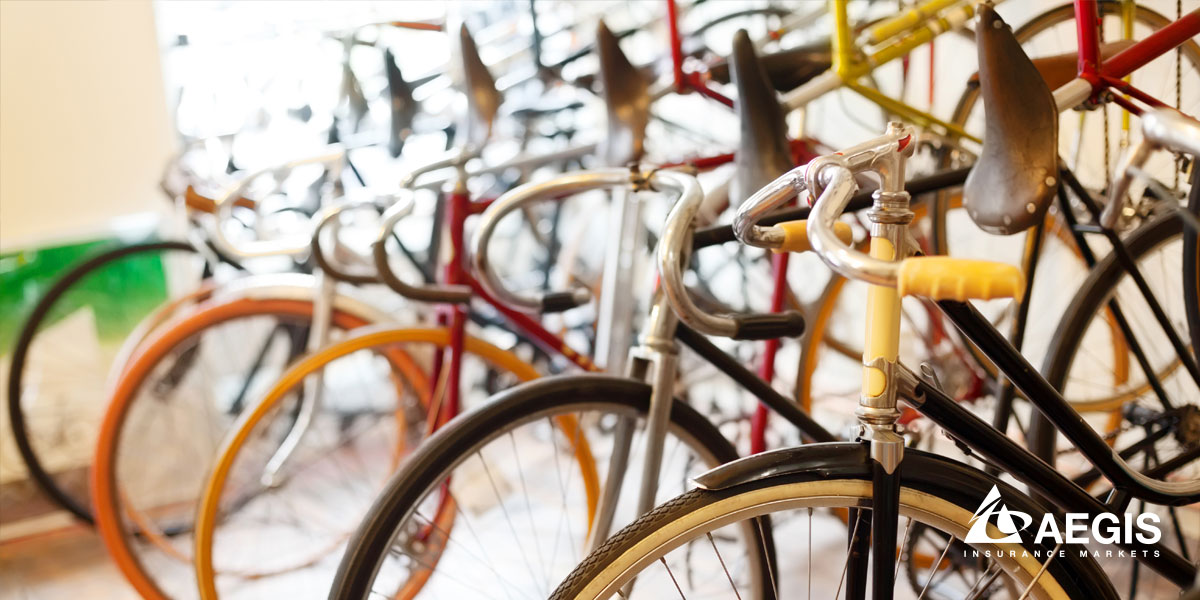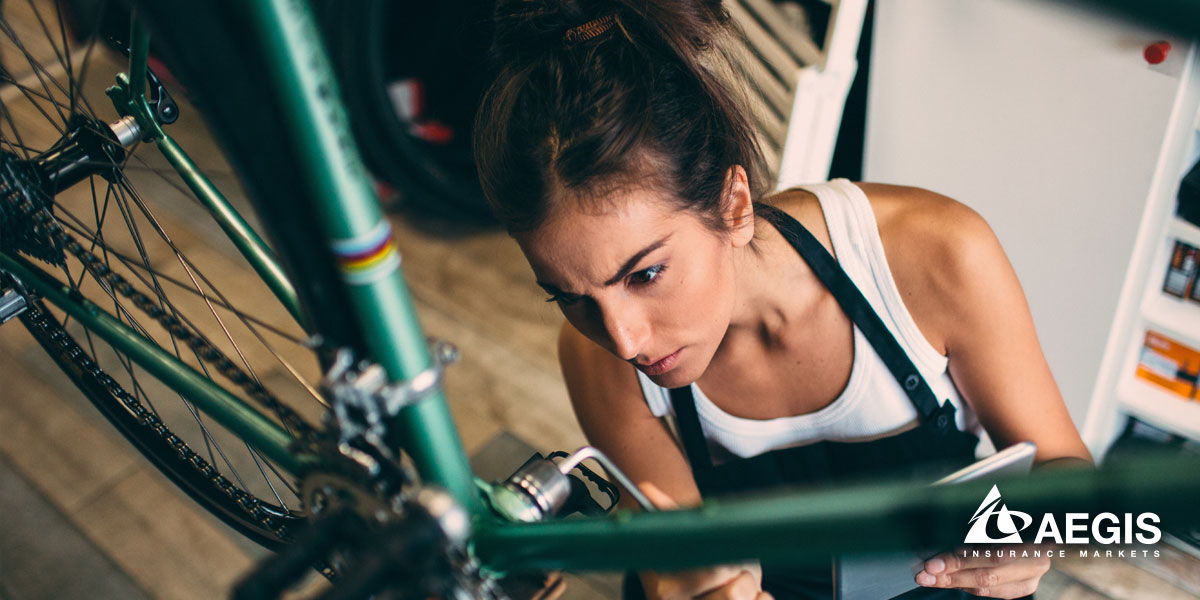Have you been dreaming of opening your own bike shop? Then let’s dive right on in. We’ve compiled a list of ten considerations that you will need to understand, calculate, and put on paper if you want to get your shop up and running successfully.
Whether you want to sell cruisers on the boardwalk in Santa Cruz, or mountain bikes on the trails around Lake Tahoe, here are 10 things to consider before you pull the trigger on your dream of owning a bicycle store.
1. Why Are You Opening a Bike Shop?
Starting your own business can be an exciting and rewarding experience, particularly if you are pursuing something you are passionate about. But being a business owner requires time, energy, creativity, and commitment, as well.
Before you open your bike shop you should ask yourself why. What’s driving you?
If you want to open a bike shop because you are passionate about the industry, want to build something and watch it grow, and are willing to work longer and harder than you’ve ever worked in your life, then you may have what it takes to be a successful shop owner.
On the other hand, if you want to open a bike shop because you think it’s a quick ticket to getting rich, or because you want to work half-days every day, then you may want to reconsider.
Successful business owners will tell you: it takes a lot of hard work, long hours, commitment, industry know-how, and maybe even a touch of luck to have a profitable bike shop.

2. How Will You Structure Your Business
Before you get on to the exciting parts of being a shop owner, like picking out inventory or planning a mountain bike skills camp, you’re going to have to take care of a lot of unglamorous business decisions. Like how to structure your business.
Here are some of the more commonly used business structures, and what that means to you.
Sole Proprietor: You alone own the business and are solely responsible for its assets and liabilities. The business itself is not taxed separately; any income is taxed as your income. You have complete control over the business, but are also legally responsible for debts and liabilities, and you may have to file a Fictitious Name or DBA (doing business as) statement for your shop. Find out more about sole proprietorship from the SBA.
Partnership: A single business where two or more people share ownership, contribute to the business, and share in business profits and losses. The business itself does not pay income tax, rather profits or losses pass through to the partners’ personal taxes. Partners are personally liable for the business debts and decisions made by other partners. Find out more about partnerships from the SBA.
Limited Liability Company (LLC): LLCs can be owned by one or more “members.” Like a partnership, the business itself does not pay income tax. All profits and losses are passed through to the members’ personal tax returns. Unlike a partnership, the members are protected from personal liability or debt from business decisions or actions of the LLC. If the LLC is sued, members’ personal assets may be protected. Find out more about LLCs and other corporate business structures from the DBA.
3. What Does Your Market Look Like?
A market analysis is a must before you open any kind of shop or business. When you perform a market analysis, you will gather information about your particular industry, such as the bicycle industry. You will want to know the size of the bicycle industry, what sort of growth the industry has had year over year, and what sort of trends are forecasted for the future of your industry.
Check out the National Bicycle Dealers Association Industry Overview for market information before you open your bike shop.
For bike shop owners, a competitive analysis is also an important consideration when compiling market research. Bike manufacturers tend to sign exclusive contracts to dealers, so you most likely won’t be able to carry the same big name bikes as another bike shop on your block, or even in your town. Knowing how many other bike shops are in your geographic area and what manufacturers they work with will help you as you plan your business.

4. Location, Location, Location
Where do you want to open your shop? You’ve heard the old adage, “location is everything.” And if you want to open a bike shop, that saying is very true. If you’re in a bike friendly town with plenty of outdoor sports enthusiasts, cyclists, and even tourists, opening a shop may make financial sense -- even if there is plenty of competition. But if you are in a town with a few existing bike shops and a very small biking community, you may be setting up for a losing battle.
The physical location of your shop will matter, too. Rents may be higher in one part of town compared to another. But increased foot traffic and visibility for your shop may make higher rents worth it. You will have to crunch some numbers to decide exactly where to set up shop. Talk to other business owners in the area and find out how they rate the traffic to their shop.
5. What Do the Numbers Say?
Getting into the financial aspect of opening a bike shop may feel daunting, but it’s an important consideration before you sign a lease and strike a deal with your favorite bike manufacturers.
Here are some things to calculate before you open your doors:
Start-up Costs: The costs associated with starting and operating your business for the first few months. Will include fixed costs (things that do not change depending on the amount of goods you sell, such as rent, utilities, and business insurance) and variable costs (things associated with the sale of your goods, such as inventory, shipping, and sales commissions). Here’s a list of the average expenses for a specialty bicycle retailer, courtesy of the NBDA.
Break Even Analysis: Calculate when your business will be able to pay all of its expenses and begin to make a profit. $5,000 in sales does not mean that you have $5,000 profit for your business. Learn more about calculating your break even point here.
Cash Flow Analysis: Cash flow is the movement of money in and out of your business, such as income from the sales of your products and expenses for business expenses like inventory purchases, employee pay, or rent. Calculating a cash flow analysis can help you determine how much cash you need on hand to operate your business, and can show you how much cash you can expect to have on hand.
Ok, so crunching numbers can be a bit grueling, particularly if you’re not a financial expert or accounting whiz kid. Don’t be afraid to ask for help or consult someone who has experience in calculating startup costs and financial analysis. It may not be the most fun part of opening your bike shop, but it’s a necessary one. Down the road you’ll be grateful you took the time to do the math up front.
6. What Will You Offer?
Now it’s time to get on with the fun part of starting your business: your products and services. What do you want to offer? Think outside of the box on this one. Sure, your bike shop will offer retail sales of bikes, equipment, and even clothing and accessories. That’s a given. But what else can you offer to your customers?
- Repair services
- Lessons, camps, and skill classes
- Tours
- Demos
Consider ways in which you can bring in recurring revenue to your shop, beyond repair services. What can you offer that will bring an enthusiastic cycling community back to you month after month? The services you offer could be the difference between operating a bike shop with average profit and a bike shop that is extremely profitable.

7. Who Will Help You Get the Job Done?
When you’re a small business owner you wear a lot of hats, work long hours, and take on many different responsibilities. But you may not be able to do everything yourself. If you are going to hire employees or pay subcontractors to help you run your business, you’re going to need to get a crash course in employment law. For example, did you know that most states require you to provide workers’ comp insurance to your employees?
Check out the SBA guide hiring employees to help you stay compliant with federal and state regulations.
8. What’s the Risk?
Starting a business is risky on multiple levels. There’s the financial risks: your business could go into debt, or you could lose all of the money that you invested in startup costs. But there are other risks to being a business owner, too. And if you’re a sole proprietor or partner in your company, those risks could impact your personal assets as well as your business assets.
- A customer could trip, fall, or otherwise be injured inside your shop.
- An accident during a cycling lesson could result in an injury.
- An employee could be injured performing a repair.
- A store-owned vehicle could be involved in an auto accident.
- Your store could be sued for copyright infringement or advertising injuries.
It’s important to have a good understanding of all the risks involved with owning a bike shop. Once you have identified the risks you face, you can move on to trying to prevent and manage them.
9. How Much Insurance Will You Carry?
The best way to manage the risks you face as a bike shop owner is to select the right amount of insurance protection for your business. Think of insurance as the ultimate in safety equipment for your shop: like a bike helmet for your business. If something goes wrong, your insurance can be there to cover the high costs of injuries, lawsuits, or medical bills.
The right amount of insurance for you is whatever it takes to cover the risks you’re most likely to face as a bike shop owner, while still leaving your plenty of cash flow to keep your shop operational. An insurance package specifically designed for bike shop owners, such as Bike Shop Insurance, is always a good bet. You can custom-tailor your specific coverage depending on how many employees you have, how many vehicles your business will be using, and what sorts of services you will provide, to get the perfect amount of coverage your business can afford.
10. How Will You Market Your Business?
Word-of-mouth-referrals and repeat customers are great for business, but you’re going to need a more modern marketing approach if you want to draw customers into your bike shop. Today’s consumers do the majority of their research and buying decisions online, so your bike shop will need to be online, too.
Be sure to include the costs of getting your website up and running, website maintenance, and digital advertising into your financial considerations.
Your marketing plan should include digital efforts, such as blogging and website optimization, as well as strategic use of social media and paid advertisements to help your business get found online.
There’s a lot more to opening a bike shop than just finding a sweet spot for your shop and filling it with inventory. But the more work you do upfront to prepare, the more likely you are to find success in the end. Taking the time to learn what’s involved in opening a bike shop will put you one-step closer to achieving your dream.